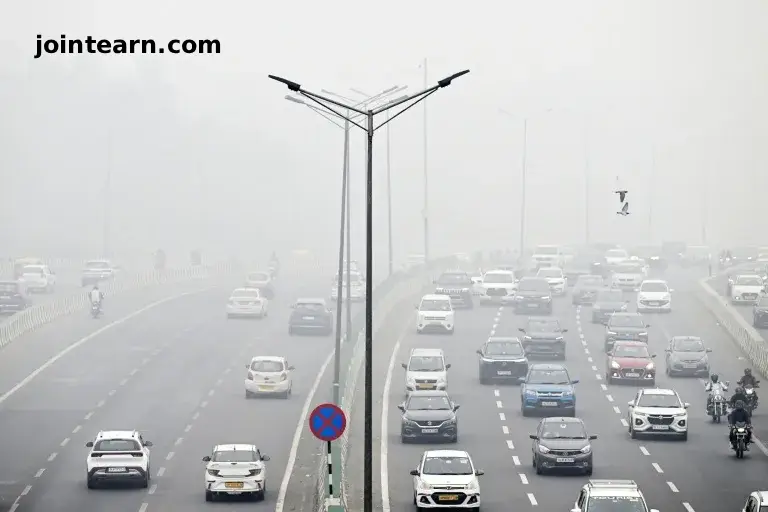
Every winter, a heavy grey haze rolls into New Delhi, coating India’s capital in a suffocating shroud of toxic smog. For millions, it’s an unavoidable seasonal curse. But for a growing number of families, the smog is now a reason to leave home entirely — joining what experts call India’s new class of “pollution refugees.”
Among them is Natasha Uppal, 36, a communications professional and founder of the maternal-health initiative Matrescence India. After years of battling migraines, sore throats, and an endless hum of air purifiers, Uppal and her husband made a life-changing decision: they would leave Delhi before bringing a child into the world.
“When we thought about what we can curate for our child in Delhi, the air became such a blocker,” she said. “It wasn’t about luxury — it was about survival.”
In 2022, the couple relocated to Bengaluru, known for its relatively better air. Just days later, Uppal discovered she was pregnant. Today, she says the move was “the best decision” they’ve ever made.
Although Bengaluru’s air pollution levels can still reach three times the World Health Organization (WHO) safe limit, that’s a far cry from Delhi’s months-long haze where pollution often spikes 60 times higher than global standards.
“My son can play outside without me worrying every minute,” Uppal said. “Clean air should be a basic human right.”
The World’s Most Polluted Capital
New Delhi, home to over 30 million residents, routinely ranks as the world’s most polluted city. Each winter, a toxic cocktail of crop-burning smoke, factory emissions, construction dust, and traffic fumes traps residents indoors.
Levels of PM2.5 — microscopic particles that can enter the bloodstream — soar to dangerous levels, leading to chronic respiratory illnesses, heart disease, and premature death.
According to a 2024 Lancet Planetary Health study, more than 3.8 million deaths in India between 2009 and 2019 were linked directly to air pollution.
The UNICEF and WHO have repeatedly warned that air pollution poses a particularly grave threat to children, whose lungs and immune systems are still developing.
Despite government pledges and short-term measures — such as odd-even vehicle bans, construction halts, and mist-spraying water cannons — Delhi’s air remains toxic. Authorities now plan cloud-seeding experiments to artificially induce rain in an effort to wash away pollutants.
Escaping the Capital: The New “Pollution Exodus”
Families with means are quietly leaving Delhi for cleaner cities such as Bengaluru, Goa, Pune, and Chennai.
For Vidushi Malhotra, 36, the breaking point came when her two-year-old son fell sick repeatedly during the 2020 winter season.
“We had three air purifiers running 24/7, and I still needed more,” she said.
In 2021, Malhotra moved to Goa, where ocean winds keep pollution at manageable levels. Soon after, several of her friends followed — creating what she calls a “mini-movement for clean air.”
“It hurts to go back and see my loved ones still suffering through the smog,” she said. “No one should have to choose between family and clean air.”
Those Left Behind: Living with Anxiety and Inhalers
For many others, relocation isn’t an option. Jobs, aging parents, or financial constraints keep them tethered to the capital.
Roli Shrivastava, 34, remains in Delhi with her husband and toddler. Their home now resembles a hospital ward — stocked with inhalers, nebulisers, and air purifiers.
“The doctor told us, ‘When your child starts coughing at night, don’t even call me — just start nebulising,’” she said.
Each winter, Shrivastava tracks air-quality data obsessively and limits outdoor playtime. But she says the difference when visiting Chennai, her hometown, is “night and day.”
“His nose clears up, the cough disappears,” she said. “If it weren’t for our jobs, we would have left Delhi years ago.”
A Crisis of Health, Hope, and Inequality
Environmental experts say that air pollution in Delhi is not just a health emergency, but also a social-justice issue. While wealthier families can flee or insulate their homes with air purifiers, millions of daily-wage workers have no choice but to breathe the toxic air day and night.
Street vendors, construction workers, and rickshaw drivers suffer disproportionately from lung disease, asthma, and reduced life expectancy, according to data from India’s Central Pollution Control Board (CPCB).
“The poorest people in Delhi pay the highest price,” says Dr. Randeep Guleria, former director of AIIMS, New Delhi. “This isn’t just pollution — it’s a silent public-health disaster.”
Can Delhi Be Saved?
Despite years of failed reforms, experts insist that improvement is still possible — but only through systemic, year-round interventions.
Key solutions include:
- Phasing out coal-based power plants in and around the city
- Incentivizing clean public transport and electric vehicles
- Regulating crop-burning through alternative residue-management programs
- Enforcing construction-dust control and industrial emission standards
Environmental activist Sunita Narain, of the Centre for Science and Environment (CSE), says the problem is not a lack of awareness — it’s a lack of political will.
“Delhi knows it’s choking,” she said. “What we need now is not more studies, but action — clean energy, better urban planning, and accountability.”
A Future Away from the Smog
Back in Bengaluru, Natasha Uppal says she still feels pangs of guilt leaving her family behind. But watching her son play outside under a blue sky affirms that they made the right decision.
“For the first time, I can open the windows,” she said. “That’s something I never thought I’d say — that fresh air feels like freedom.”
As climate change worsens and cities across northern India grow denser, the question of who gets to breathe clean air — and who doesn’t — may define India’s next great migration.
Leave a Reply